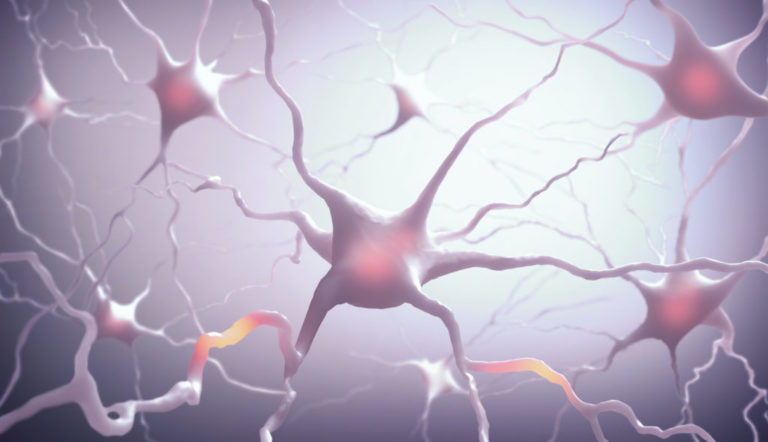Everyone experiences pain at some point, some more frequently and more intensely than others do. There is a reason why everyone experiences pain differently and it has to do with how the brain handles and processes nerve signals. Let’s take a look at just how pain works.
Pain assists as the body’s own warning system. It alerts your body to an injury or when something is going wrong inside of your body like an infection. Pain, although uncomfortable, is at times necessary and helpful because it sends a signal that something is not right. It can also aid in healing by telling you to avoid using a damaged part of the body or to not touch a wound.
How Pain Travels
Pain signals travel into the spinal cord along the peripheral nervous system. There is a gate control theory that states there are “gates” in the spinal cord that are located between the peripheral nerves and the brain. These “gates” control the pain messages that are perceived. Pain signals do not reach the brain as soon as they are felt, they have to first pass through these neurological gates to determine how serious the signals are and if they should even reach the brain. There are many factors that determine whether these gates send the message to the brain or not. These include the following:
- How intense the pain signals seem to be
- Other sensory signals like temperature, touch, and pressure at the area of the injury
- Signals from the brain telling the gates to send the signals or not depending on priority
Depending on how the gate decides to process these pain messages, the signals are dealt with in a variety of ways. These include the following:
- Permitted to go directly to the brain
- Reformed prior to being sent to the brain – depending on expectations
- Not allowed to pass to the brain
Types of Pain
Pain signals are passed by two types of nerve fibers which are the A-delta and C fibers. The A-delta fiber transmits the first sensation you feel, which is sharp pain. This is considered a “fast” pain message. Reaching the cortex rapidly and prompting instant action to decrease any pain or threat of injury to the body. The C fiber transports the pain that follows, which is aching but not as intense. This is a “slow” pain message that is typically passed through the hypothalamus and limbic system. The hypothalamus is responsible for releasing specific stress hormones to the body. The limbic system is associated with processing emotions. In order to reach the brain, these signals pass through the group of nerve cells which is called the dorsal horn. This is where the gates control the actions of the pain signals they receive. They will either allow them to pass along to the brain or prevent them from leaving the gates and reaching the brain. All of the nerve fibers in the body connect to the spinal cord. Therefore, all of the messages go to the spinal cord then are either labeled as important, not so serious or completely denied access to the brain.
Pain signals all reach different areas of the brain that control a variety of functions, including pain management. When a pain signal reaches the brain, many different things can occur. The part of the brain that connects to the spinal cord can prevent or soften the pain signals that are being delivered. This is due to the production of endorphins. Endorphins naturally occur in the body and are neurotransmitters that create a euphoric feeling for people. Exercise, sex, and even stress can stimulate the production of endorphins. If an injury occurs in the middle of playing a sport or in a big accident, endorphins are produced which can mute the pain until the activity has ended.
Emotions and ways of thinking can also determine how pain is perceived by people. Everyone utilizes pain management differently. Someone who is depressed or has anxiety is more likely to feel pain more intensely. These people would have a more difficult time dealing with pain than a person who is not depressed or anxious. Since the brain sends messages through the gate on whether pain signals will be received, it is dependent on a person’s way of thinking as well as their emotions. People who do not deal with conditions like chronic pain, anxiety or depression would most likely focus their attention on other activities rather than being completely disturbed on the pain.
There is so much that is still unknown about how pain works. However, we do know that pain is an intricate sensation that can be processed in a variety of ways depending on a person’s emotions and thoughts.
Treatment with Dr. Yashar
Dr. Yashar has become a preeminent Neurosurgeon in the Los Angeles, San Fernando, and Santa Clarita areas since completing his fellowship and residency in 2012. With his broad experience, interest, and accomplishments in Spine, Brain, and Neuro-Interventional procedures, Dr. Yashar is a highly-skilled and exceptional Neurosurgeon, focusing on all aspects within the field of Neurosurgery, along with a special emphasis on both Spinal Surgery and Interventional Neurosurgical Procedures.
Dr. Yashar is committed to providing compassionate care and empathy to all of his patients. He treats each patient individually, providing them with the necessary tools to direct their own care, and guiding them through each step of the treatment process.
If you have any questions or would like to schedule a consultation, contact us today.


